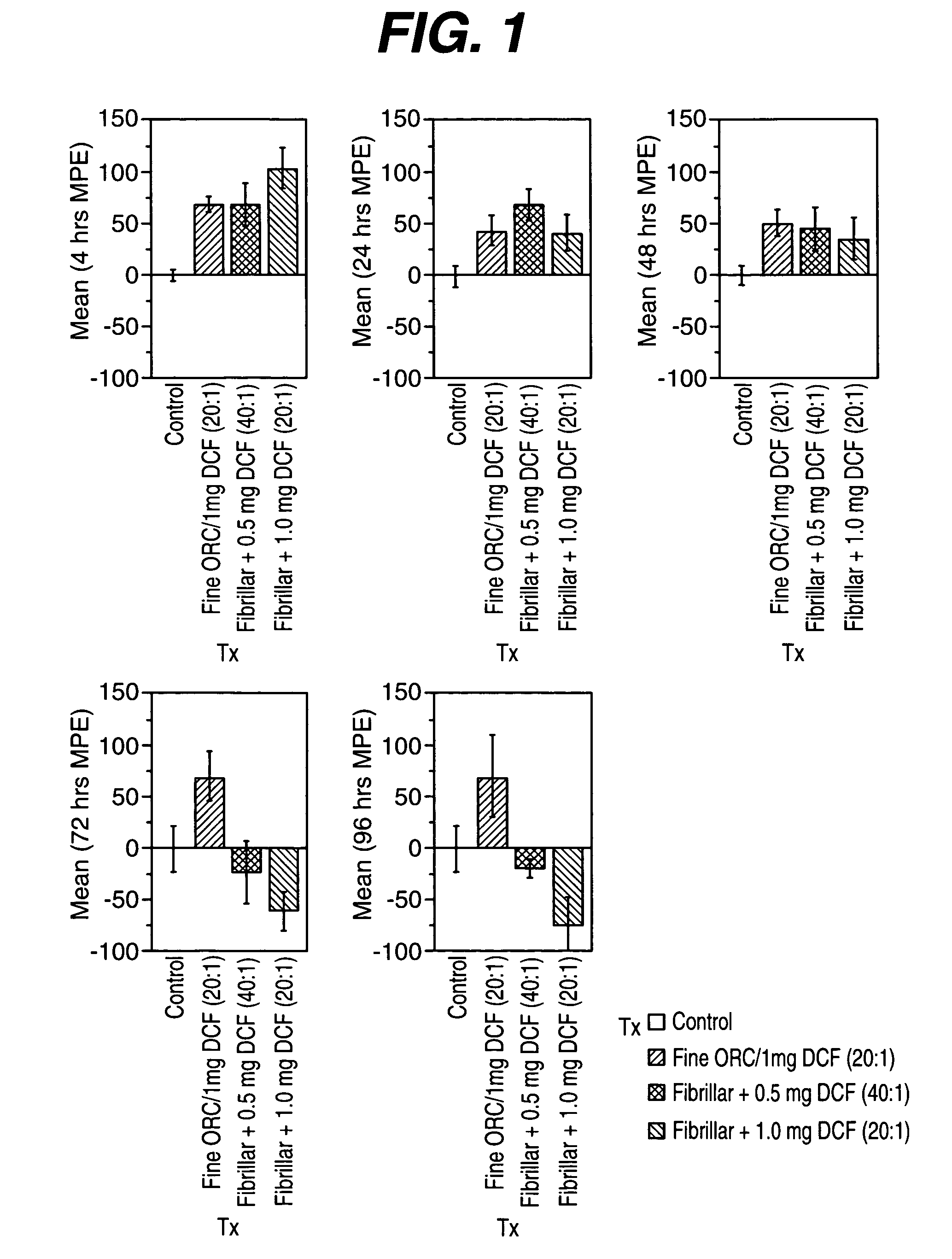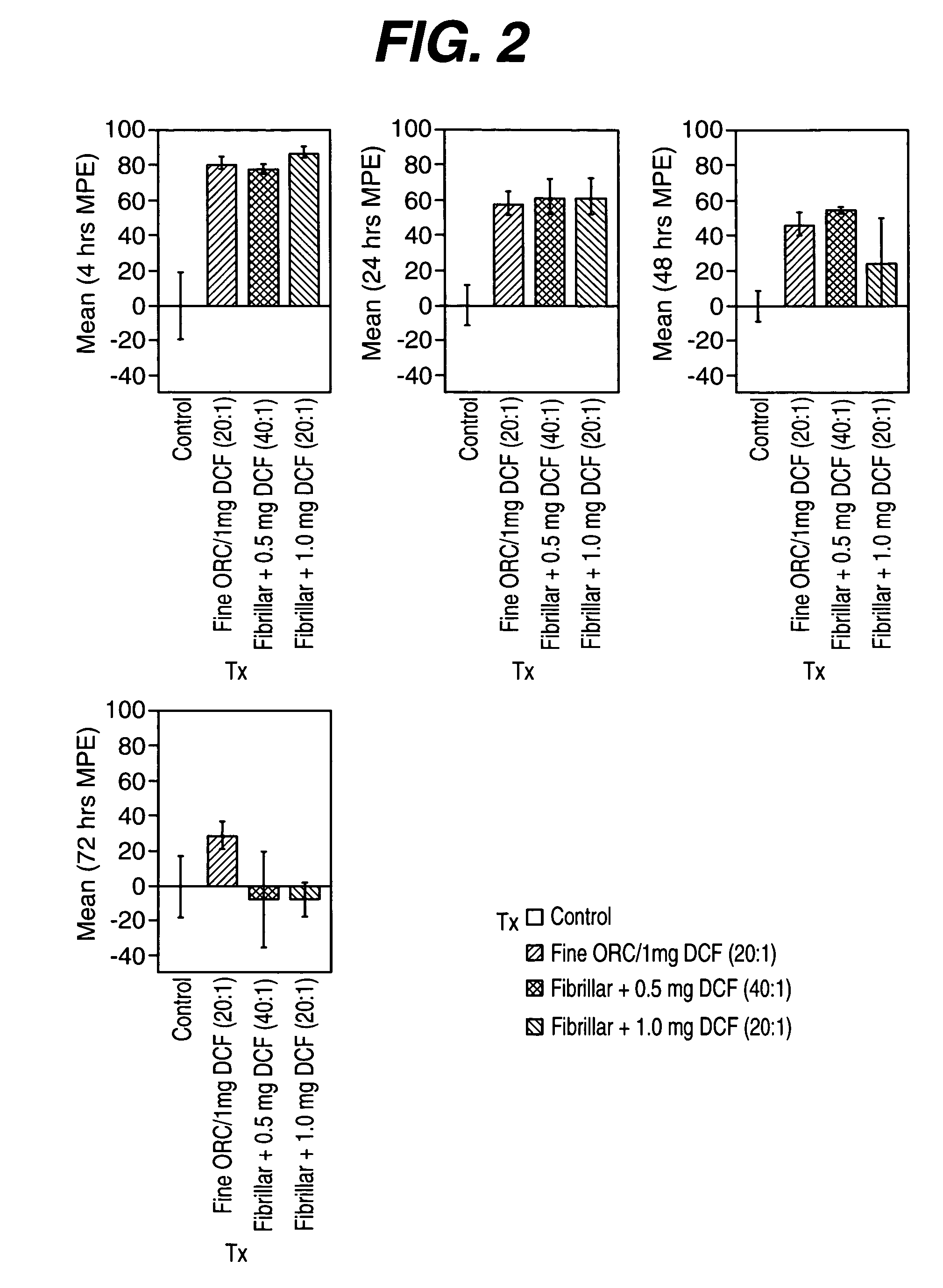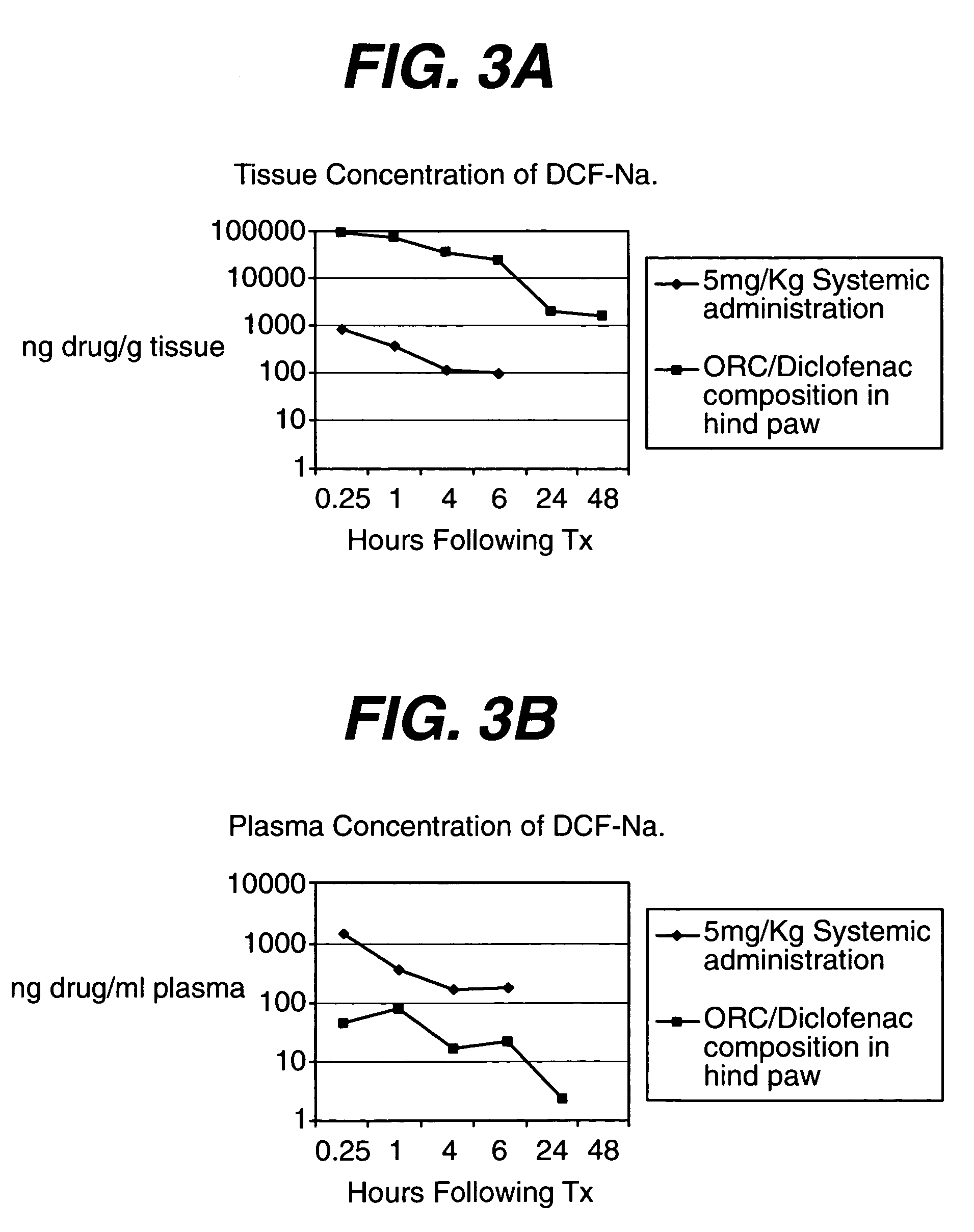Composition and method for treating post-surgical pain
a post-surgical pain and composition technology, applied in the field of anesthesiology, can solve the problems of insufficient systemic administration of drugs to relieve pain after surgery, insufficient training of health care professionals, and subjective pain
- Summary
- Abstract
- Description
- Claims
- Application Information
AI Technical Summary
Benefits of technology
Problems solved by technology
Method used
Image
Examples
example 1
[0048]Co-blended powders of oxidized regenerated cellulose and diclofenac sodium in an amount of approximately 20 mg oxidized regenerated cellulose powder per 1 mg diclofenac sodium powder, or a 20:1 oxidized regenerated cellulose powder to diclofenac sodium powder mass ratio. Other mass ratios of oxidized regenerated cellulose powder: diclofenac sodium powder have also been made in the range of 40:1 to 2:1. This corresponds to a concentration of non-steroidal anti-inflammatory drug in the composition of about 2.5 to 50 percent by weight, respectively. To achieve a range of oxidized regenerated cellulose particle sizes to be used in the co-blended powder, Surgicel Fibrillar™ samples were first frozen in liquid nitrogen. The frozen samples were then milled with a cryogenic mill.
[0049]The cryogenic milling process will now be described in detail. Approximately 0.5 grams of 2 cm×2 cm squares Surgicel Fibrillar™ was added to a steel cryo-tube. The cryo-tube was a stainless steel centere...
example 2
[0051]Diclofenac sodium dry oxidized regenerated cellulose samples was prepared by soaking 1 cm×0.5 cm (≈5 mg) pieces of Interceed® absorbable adhesion barrier in diclofenac sodium aqueous solutions (5 mg / ml) at room temperature. After soaking for 30 minutes, the samples were taken out from the solution and dried first in open air and then in a vacuum oven at room temperature. Part of the diclofenac sodium / oxidized regenerated cellulose dry formulation samples was treated with cobalt radiation for sterilization. Before sterilization, drug loading was 11.3%, and after sterilization, it was 11.5%. This result indicates that the radiation sterilization did not significantly change the drug content of the formulation. FTIR analysis indicated there is no change chemically or structurally before and after sterilization.
Example 3
Animal Model to Assess Levels of Pain
[0052]In order to evaluate the analgesic efficacy of the composition containing oxidized regenerated cellulose particles dry b...
example 3
Pharmacokinetic Evaluation
[0067]Pharmacokinetic studies in a rat model were conducted to determine the rate of diclofenac release from the composition. Male Sprague Dawley rats (four rats per time point per group) were anesthetized with isoflurane and subjected to a single surgical incision on the plantar surface of the left hind paw. The medial tendon was exposed by blunt dissection and subjected to a 20 second clamp using a mosquito hemostat.
[0068]In Group 1 the incision was sutured closed following manipulation of the tendon. The rats were administered an intraperitoneal injection of 5 mg / kg Diclofenac (as sodium salt, saline vehicle) 4 hours and 23 hours post-surgery. Blood and tissue samples were harvested at 0.25, 1, 4 and 6 hours after the second dose.
[0069]In Group 2, oxidized regenerated cellulose (Surgicel® Fibrillar absorbable hemostat) was implanted between the tendon and the metatarsals and 0.5 mg of Diclofenac (as sodium salt, saline vehicle) was instilled directly int...
PUM
| Property | Measurement | Unit |
|---|---|---|
| particles size | aaaaa | aaaaa |
| size | aaaaa | aaaaa |
| size | aaaaa | aaaaa |
Abstract
Description
Claims
Application Information
 Login to View More
Login to View More - R&D
- Intellectual Property
- Life Sciences
- Materials
- Tech Scout
- Unparalleled Data Quality
- Higher Quality Content
- 60% Fewer Hallucinations
Browse by: Latest US Patents, China's latest patents, Technical Efficacy Thesaurus, Application Domain, Technology Topic, Popular Technical Reports.
© 2025 PatSnap. All rights reserved.Legal|Privacy policy|Modern Slavery Act Transparency Statement|Sitemap|About US| Contact US: help@patsnap.com



